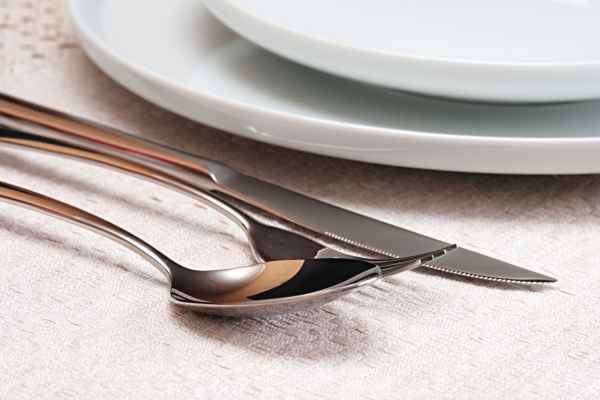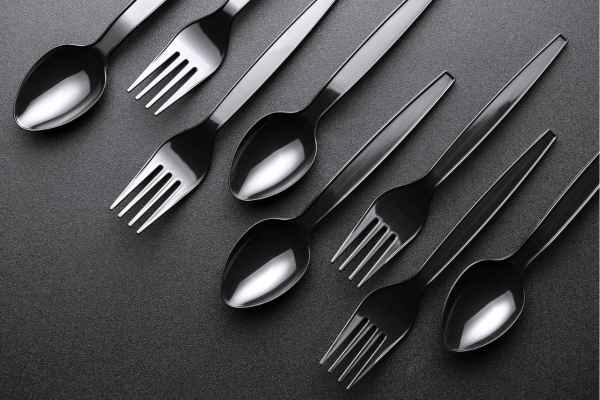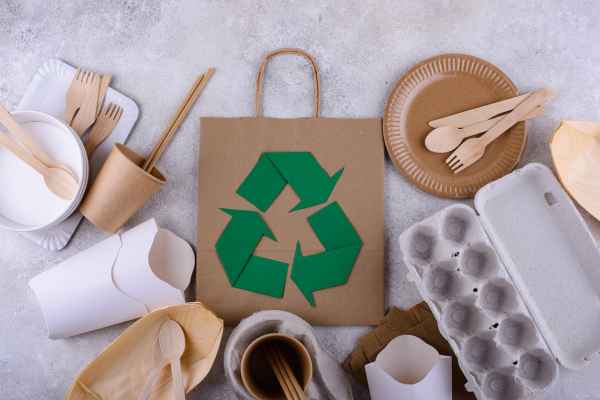Flatware—mundane, however come what may additionally essential. Imagine the everyday dinner desk stripped of its touchy forks, versatile knives, and smooth-edged spoons. How to Clean Silver Plate Flatware? An incomplete, nearly barren panorama of untapped potential. Cutlery plays an unassuming but vital position in turning an regular meal into a satisfying revel in, including elegance and comfort. For those really entering into the arena of homemaking or possibly making plans that dreamy garden accumulating, greedy the requirements of cutlery isn’t simply a practical step—it’s an initiation into the artwork of gracious website hosting. Dive in with me, and permit’s find out the nuances of knife collectively.
What is Flatware? A Simple Definition for Beginners

Flatware, at its center, consists of the utensils you use to devour and serve meals—namely, knives, forks, and spoons. While it might appear easy, the idea of cutlery is greater nuanced. Unlike “silverware,” which specifically refers to cutlery fabricated from sterling silver or covered with a silver layer, knife spans a much wider variety of substances. It can be made from durable stainless steel, high-priced silver, or even green bamboo.
But cutlery isn’t pretty much functionality. It’s about the subtle splendor it brings in your eating area, improving both the appearance and the experience of the meal. In a contemporary domestic, cutlery sits someplace among practicality and art work—a method to get pleasure from a meal and an decoration that enhances the environment of your consuming desk.
Flatware vs. Silverware: What’s the Difference?
“Flatware” and “silverware”—phrases often used interchangeably, however with good sized variations. Silverware refers specifically to utensils made from silver or silver-plated steel, wearing with it the luster of luxurious, the kind that shines proudly throughout special gatherings. cutlery, in contrast, is an umbrella time period for any dining utensils, no matter their composition. Stainless metal, plastic, or even wood—all fall beneath the good sized canopy of knife.
So, while all silverware is knife, no longer all cutlery is silverware. Understanding this subtle difference permit you to choose the great utensils for your wishes, whether you prioritize elegance for formal settings or practicality for ordinary use.
Everyday Uses of Flatware within the Modern Home
Flatware isn’t reserved for fancy events or complicated dinners. It’s component and parcel of our ordinary exercises, present at each meal—whether it’s a informal breakfast, a short lunch, or a quiet dinner. Its versatility is what makes cutlery so critical. It seamlessly adapts to any putting, from intimate domestic dinners to festive gatherings.
In most cutting-edge homes, a knife set consists of the middle pieces—forks, knives, and spoons. But many sets additionally offer specialized additions, inclusive of dessert forks, soup spoons, or even butter spreaders. These portions, even as not always critical, definitely beautify the experience, ensuring every dish is enjoyed simply because it’s intended to be.
The Basic Types of Flatware: Know Your Essentials

Flatware is available in various forms, each with a function to play on the dining table. Understanding these differences can guide you in building a collection that completely suits your culinary way of life.
Forks, Knives, and Spoons: The Core Pieces of Flatware
No cutlery set is complete without the foundational trio—forks, knives, and spoons. Forks, the versatile pickers, are great for just about everything solid, from roasted vegetables to a slice of cake. Spoons are equally multifaceted—perfect for soups, desserts, or stirring a hot drink. And knives, the sculptors of the dining world, make cutting through meats and tougher foods effortless.
But don’t let simplicity fool you—each of these comes in a variety of sizes and forms. A dinner fork is large and sturdy, while a salad fork is daintier. A soup spoon has a rounded bowl, whereas a teaspoon is smaller, more refined.
Specialized Flatware Pieces: Beyond the Basics
Beyond these essentials lie specialized flatware pieces that add elegance and purpose to specific culinary tasks. Butter knives, fish forks, and dessert spoons each serve a unique role, elevating both presentation and practicality during a meal. Although they aren’t required for everyday use, including these specialized pieces in your collection can transform ordinary dinners into something more refined.
Material Matters: Stainless Steel, Silver, and More
Material choice is pivotal in selecting flatware. Stainless steel knife is perhaps the most popular—durable, resistant to rust, and perfect for daily use. Silver cutlery, on the other hand, brings unmatched elegance to the table, reserved for those moments when style takes precedence. For those who are eco-conscious, bamboo cutlery offers a sustainable, biodegradable option that blends seamlessly with nature-oriented settings, especially when hosting garden events.
Choosing the Right Flatware: Tips for New Gardeners Setting the Table

Selecting cutlery is not merely about aesthetic appeal—it requires thoughtfulness to ensure both functionality and comfort, especially for those who are new to hosting.
How to Select Flatware for Everyday Use
When choosing cutlery for daily meals, prioritize comfort and balance. Pick up a fork or spoon and take note—does it feel balanced in your hand? Is it comfortable to hold? Weight matters too; some people enjoy the solid feel of heavier cutlery, while others find lighter pieces easier to handle. The goal is to find a set that makes everyday use a pleasure, not a chore.
Formal vs. Casual Flatware: What’s the Difference?
Flatware comes in both casual and formal styles. Casual cutlery is durable, often simple in design, and suitable for any occasion—be it a quick lunch or a relaxed dinner. Formal cutlery, by contrast, features intricate designs and high-end materials, such as sterling silver or even gold plating, reserved for those rare special moments that deserve a bit of extravagance.
Weight, Balance, and Feel: The Importance of Comfort
Comfort cannot be overstated when selecting flatware. Each piece should feel natural and easy to maneuver, neither too heavy nor flimsy. Balanced utensils make meals more enjoyable, whereas awkwardly weighted cutlery can turn dining into a tiresome task. When choosing cutlery, take the time to hold each piece—sometimes it’s that simple test that makes all the difference.
Caring for Your Flatware: Keep it Looking Good

Cutlery may be built to last, but without proper care, even the finest pieces can lose their luster. Keeping your cutlery pristine requires a little attention to detail.
Proper Washing Techniques: Hand Wash vs. Dishwasher
Many cutlery sets are labeled dishwasher-safe, but hand washing is often the best way to preserve them—especially for more luxurious materials like silver. If using a dishwasher, ensure the utensils are well separated, and avoid harsh detergents, which can corrode the metal over time. The goal is to keep that sparkling finish intact, no matter the method of cleaning.
How to Polish and Remove Stains from Flatware
Polishing is essential for maintaining the sheen of silver flatware. For stainless steel, a simple wash with mild soap will usually suffice, but periodic polishing can help keep it looking brand new. Acidic foods sometimes leave stains; a paste of baking soda and water can be used to gently buff these marks away, restoring the original shine.
Storing Flatware: Preventing Scratches and Damage
Proper storage is key to extending the life of your cutlery. Silver flatware is best stored in a cloth-lined drawer or a specialized storage box to avoid exposure to air, which causes tarnishing. Stainless steel can withstand a bit more wear, but keeping the pieces separated to prevent scratching is always a good idea.
Flatware for Outdoor Garden Gatherings: What You Need to Know

For those who love outdoor gatherings, choosing the right cutlery is vital to creating a seamless and enjoyable event.
Choosing Durable Flatware for Garden Picnics and Parties
Outdoor dining requires a different kind of cutlery—something durable enough to withstand elements like wind and moisture. Stainless steel and plastic are popular choices for garden gatherings. While silver may look exquisite, it’s not ideal for the outdoors, as it is prone to damage.
Best Flatware Materials for Outdoor Use
Stainless steel and bamboo are exceptional for outdoor use. Stainless metal is simple to smooth, proof against rust, and typically unbreakable. Bamboo, however, is light-weight, biodegradable, and has an natural aesthetic that suits right in at lawn occasions.
How to Clean and Care for Flatware Used Outdoors
After an outside amassing, it is critical to clean your flatware right away to keep away from stains or rust. Warm, soapy water works wonders for cleansing, but make certain every piece is dried very well before storing to save you any lingering moisture from inflicting harm.
Flatware Sets: How to Build Your Collection

A thoughtfully curated cutlery series is a diffused however impactful a part of any nicely-prepared kitchen, in particular for people who like to entertain.
What Comes in a Standard Flatware Set?
Standard flatware sets include the basics—dinner forks, knives, and spoons. Some units might also consist of salad forks, teaspoons, and serving utensils. For novices, a easy set can function a solid foundation, and you can make bigger your collection as you grow greater cushty with website hosting.
Expanding Your Collection: Add-On Pieces for Special Occasions
As you develop, you can want to enhance your flatware collection by using adding distinctiveness items like soup spoons, dessert forks, or steak knives. These portions aren’t important but could make a good sized distinction whilst hosting formal dinners or particular events.
Flatware for Large Gatherings: What to Buy for Hosting
When getting ready for large gatherings, ensure you have got sufficient cutlery for all of your visitors. Consider investing in sets with a couple of location settings or definitely upload a few extra units on your series. There’s nothing worse than strolling out of forks mid-meal all through a bustling own family amassing.
Sustainability and Flatware: Eco-Friendly Choices for Gardeners

For the eco-aware host, deciding on sustainable cutlery is a worthwhile way to reduce waste and include inexperienced residing.
The Rise of Bamboo and Biodegradable Flatware
Recently, bamboo and other biodegradable substances have won recognition as sustainable alternatives to conventional cutlery. Lightweight, sublime, and fully biodegradable, bamboo utensils are best for those who need to make environmentally friendly alternatives without sacrificing fashion.
How to Reduce Waste with Reusable Flatware Options
Replacing unmarried-use plastic utensils with reusable cutlery is an top notch manner to lessen waste. Stainless steel and bamboo are both durable and reusable, providing the benefit of traditional cutlery without contributing to the developing hassle of plastic pollutants.
Recycling and Disposing of Old Flatware Responsibly
When it is time to part with vintage cutlery, remember recycling options. Metals like stainless steel can often be recycled, at the same time as biodegradable materials like bamboo may be composted. By getting rid of cutlery responsibly, you can make certain a extra sustainable lifestyle.
Conclusion
Flatware may additionally seem inconspicuous, however it holds the electricity to convert every meal. Whether it’s the gleam of silver at a formal dinner or the sturdy comfort of stainless steel at a informal garden accumulating, cutlery can elevate the enjoy of dining. Understanding the differing types, substances, and the way to care for them will help you make the most of your knife collection. So, next time you sit right down to experience a meal, take a second to comprehend the easy, but state-of-the-art tools that make a contribution on your eating satisfaction.

